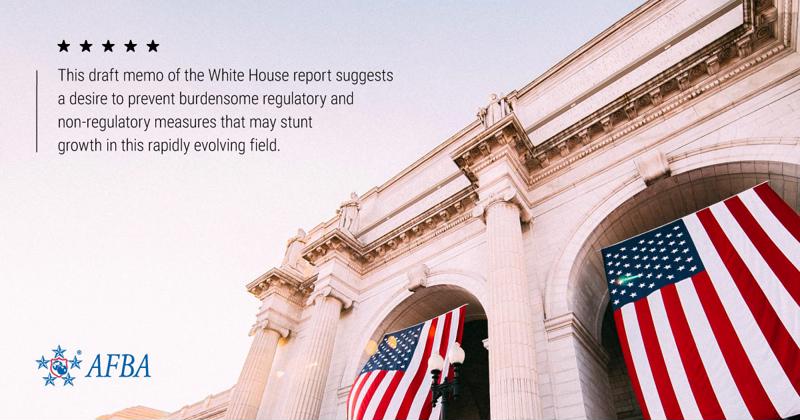A draft memorandum of a White House artificial intelligence report was released earlier this year, offering guidance to federal agencies on how to regulate the use of AI.
 “The appearance of U.S. Department of Defense (DoD) visual information does not imply or constitute DoD endorsement.”
“The appearance of U.S. Department of Defense (DoD) visual information does not imply or constitute DoD endorsement.”American leadership and AI technologies
Released by the Office of Management and Budget (OMB), the draft memo was developed to comply with the 2019 Executive Order on Maintaining American Leadership in Artificial Intelligence.
This order states that the U.S. “must drive technological breakthroughs in AI” across the public and private sectors “in order to promote scientific discovery, economic competitiveness, and national security.”
It also asserts that the U.S. “must drive [the] development of appropriate technical standards and reduce barriers to the safe testing and deployment of AI technologies.”
As such, the OMB’s 2020 draft memo indicates that White House officials strive to prevent AI over-regulation, encourage its adoption and support American leadership in the field.
Stewardship of artificial intelligence
The draft memorandum covers 10 “Principles for the Stewardship of AI Applications.” Agencies are asked to consider the following points when reaching regulatory and non-regulatory decisions about the development and implementation of AI technologies outside of the federal government:
1. Public Trust in AI: Despite the possible risks associated with AI adoption, artificial intelligence is expected to have positive impacts on social and economic life. As such, federal agencies should further “reliable, robust and trustworthy” uses of AI to help encourage public validation and trust.
2. Public Participation: Agencies are encouraged to provide ample public information and invite citizens to contribute to and participate in the rulemaking process.
3. Scientific Integrity and Information Quality: The draft memo asks that agencies “leverage scientific and technical information and processes” that are held to “a high standard of quality, transparency, and compliance” when formulating regulatory and non-regulatory approaches.
4. Risk Assessment and Management: Before making decisions on AI regulation, agencies should apply risk assessment and risk management best practices and maintain transparency about any findings. This approach is intended to “avoid hazard-based and unnecessarily precautionary approaches to regulation that could unjustifiably inhibit innovation.”
5. Benefits and Costs: Agencies are urged to assess “the full societal costs, benefits and distributional effects” associated with AI-related measures. This involves considering the impact on systems and processes AI tools are intended to replace.
6. Flexibility: The draft memo notes that “rigid, design-based regulations” around AI-related technical specifications will be unsuitable, and may cause American companies to fall behind other global leaders. Instead, it advises agencies to undertake “performance-based and flexible approaches” that can be easily adapted to evolving AI technologies.
7. Fairness and Non-Discrimination: Agencies should be mindful that, while AI has the potential to minimize discrimination and bias caused by human activities, it can also have the opposite effect. As such, agencies must consider non-discrimination and fairness as related to the results and effects of AI applications.
8. Disclosure and Transparency: The draft memorandum advises that disclosure and transparency around AI technologies and the rulemaking process can increase public trust, encouraging agencies to uphold these practices.
9. Safety and Security: Agencies are asked to promote AI applications that are “safe, secure and operate as intended.” They should carefully consider data security measures and integrity when addressing AI applications.
10. Interagency Coordination: Finally, the document calls upon agencies to work hand-in-hand to promote AI policy consistency and collaboratively reach decisions that “advance American innovation and growth in AI, while appropriately protecting privacy, civil liberties, and American values.”
This draft memo of the White House artificial intelligence report suggests a focus on innovation and public validation, and a desire to prevent burdensome regulatory and non-regulatory measures that may stunt growth in this rapidly evolving field.


